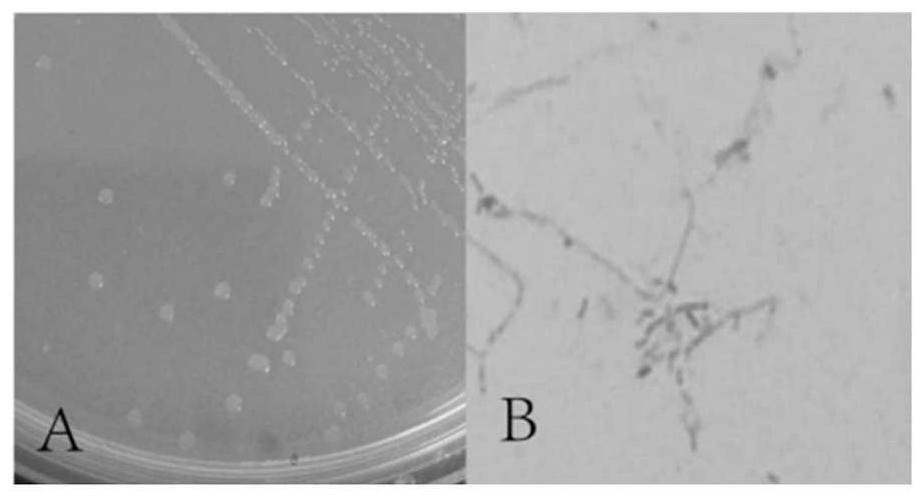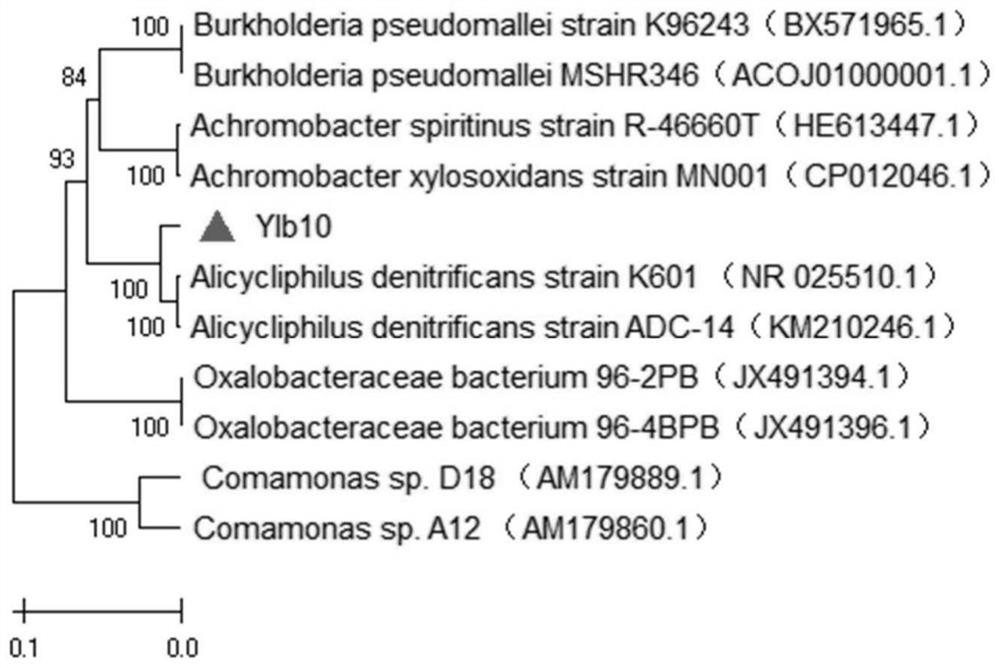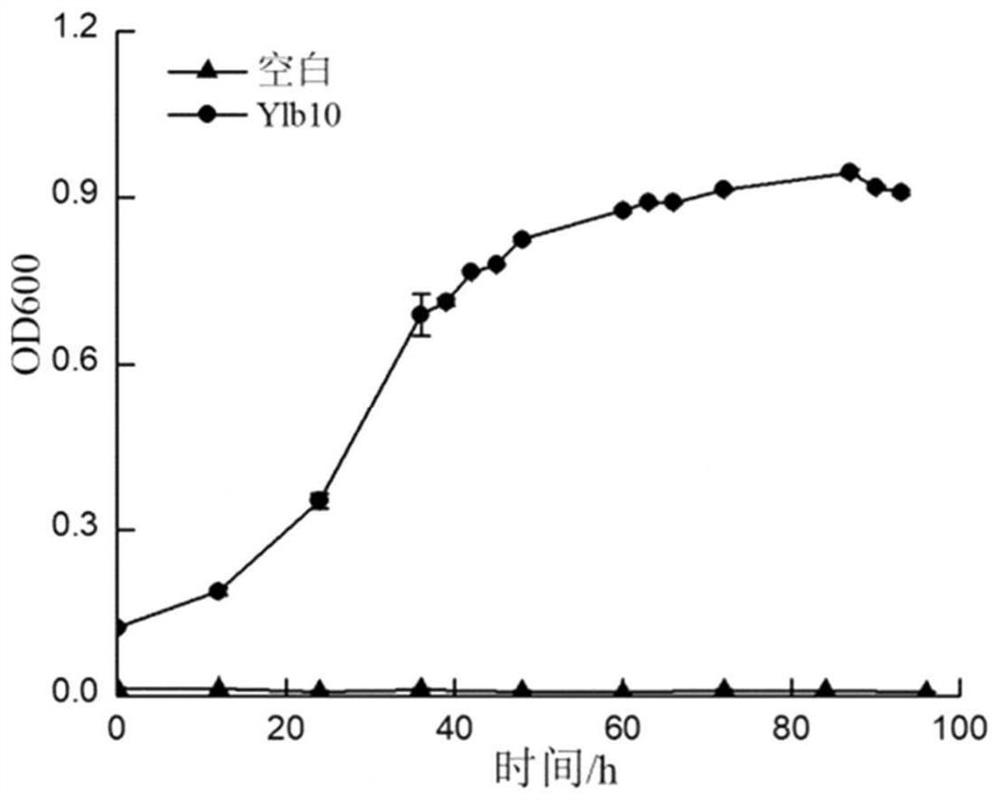A reduced strain ylb10 and its application in reducing cr(vi)
A reduced type and bacterial strain technology, applied in the biological field, can solve the problems of ineffective reduction of chromium, microbial toxicity, etc.
- Summary
- Abstract
- Description
- Claims
- Application Information
AI Technical Summary
Problems solved by technology
Method used
Image
Examples
Embodiment 1
[0022] Isolation and purification of Ylb10
[0023] YEM001 is a group of bacteria that can effectively reduce Cr(VI). It was obtained from the bottom mud of Qiusuo Creek of China Three Gorges University and PCS culture solution (containing Cr(VI)) through 5 generations of enrichment culture.
[0024] Using the YEM001 bacterial population as the source of the isolated bacteria, the Cr(VI)-reducing strain was isolated and purified by the gradient dilution coating plate method, and finally the pure culture strain Ylb10 with Cr(VI) ability was obtained. The medium used for isolation and cultivation is PCS-Cr medium, the main components are: peptone 5g / L, yeast extract powder 1g / L, sodium chloride 5g / L, pH=8.5-9.0, K 2 Cr 2 o 7 100mg / L. The strains were cultured at 28°C for biochemical culture. For solid medium, add 1.5% agar powder (Suolaibao, Beijing).
[0025] The strain morphology and Gram staining results of the obtained strain Ylb10 are shown in figure 1 .The results s...
Embodiment 2
[0027] Phylogenetic analysis of Ylb10 strain
[0028] Cultivate Ylb10 bacteria for about 48 hours, collect 3OD bacterial volume, extract total bacterial DNA, and perform 16SrDNA sequencing analysis on the obtained DNA. The sequencing results were compared with the existing 16S rDNA sequences in the NCBI database, and the phylogenetic tree was analyzed using MEGA X. The phylogenetic tree constructed is shown in figure 2 . The results showed that the 16S rDNA sequence of the strain was 98.07% similar to the 16S rDNA sequence of Alicyclophilus denitrificans in the database. The strain was identified as Alicycliphilus denitrificans.
Embodiment 3
[0030] Growth Characteristics of Ylb10 Bacteria
[0031] The growth trend of Ylb10 bacteria in the PCS medium without Cr(VI) is shown in image 3 . Inoculate Ylb10 in fresh PCS culture medium, the initial OD is 0.15, the strain starts to recover and grow within a short time, and ends the exponential growth phase within 40 hours, and enters the stable growth phase. 87h into the decline period. It shows that the bacterium has relatively rapid growth ability, which is beneficial to the treatment of environmental pollutants.
PUM
 Login to View More
Login to View More Abstract
Description
Claims
Application Information
 Login to View More
Login to View More - R&D
- Intellectual Property
- Life Sciences
- Materials
- Tech Scout
- Unparalleled Data Quality
- Higher Quality Content
- 60% Fewer Hallucinations
Browse by: Latest US Patents, China's latest patents, Technical Efficacy Thesaurus, Application Domain, Technology Topic, Popular Technical Reports.
© 2025 PatSnap. All rights reserved.Legal|Privacy policy|Modern Slavery Act Transparency Statement|Sitemap|About US| Contact US: help@patsnap.com



